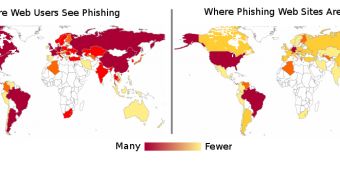Google's Safe Browsing programs is one of those things that you probably haven't heard about and is largely underrated, but it's a huge deal.
Google is in a better position than most to know whether a site is peddling malware and it started using that knowledge in 2007 to warn users about the dangers these sites pose.
"The goal of Safe Browsing is still the same today as it was five years ago: to protect people from malicious content on the Internet," Google said.
"Today, this protection extends not only to Google’s search results and ads, but also to popular web browsers such as Chrome, Firefox and Safari," it added.
Google is warning users via search, if you click on a search result that leads to an infected page you get an interstitial page warning you of the danger and the opportunity to turn back.
But the company also offers the service to others, free of charge, via an API. The Safe Browsing API is used by Google's own Chrome, Firefox and Safari.
Users of any of those browsers are notified that they're about to visit a dangerous site whenever they arrive at one. Via these three browsers Safe Browsing reaches some 600 million people.
In Chrome, Google uses the service to scan downloads as well resulting in some 300,000 warnings daily.
Of course Google Search is used by hundreds of millions of people, close to a billion, every month.
Google sends several million notifications to users via the browsers per day. It also sends some 12 to 14 million warnings via Google Search every day.
"The threat landscape changes rapidly. Our adversaries are highly motivated by making money from unsuspecting victims, and at great cost to everyone involved," Google added.
"Our tangible impact in making the web more secure and our ability to directly protect users from harm has been a great source of motivation for everyone on the Safe Browsing team," it said.

 14 DAY TRIAL //
14 DAY TRIAL //